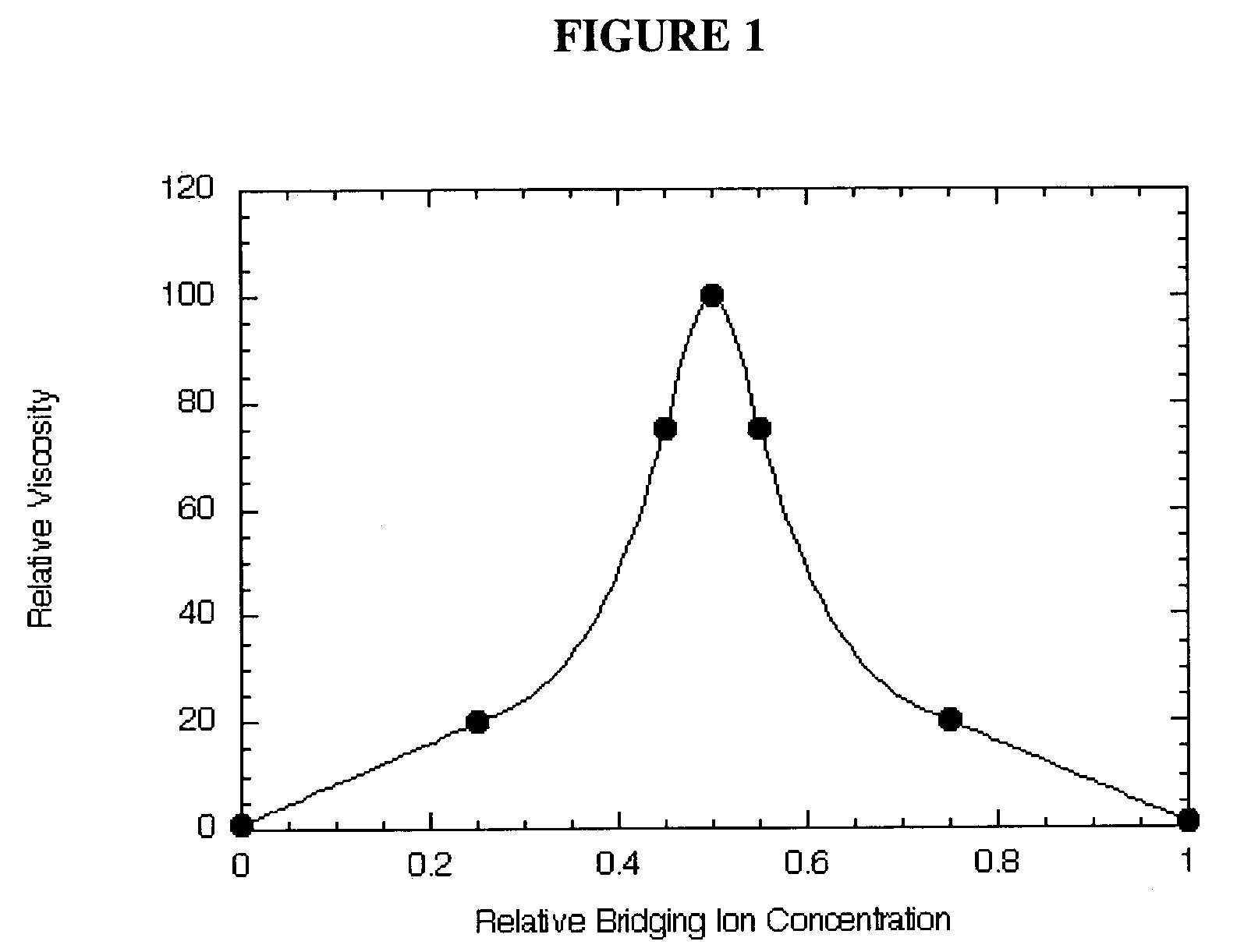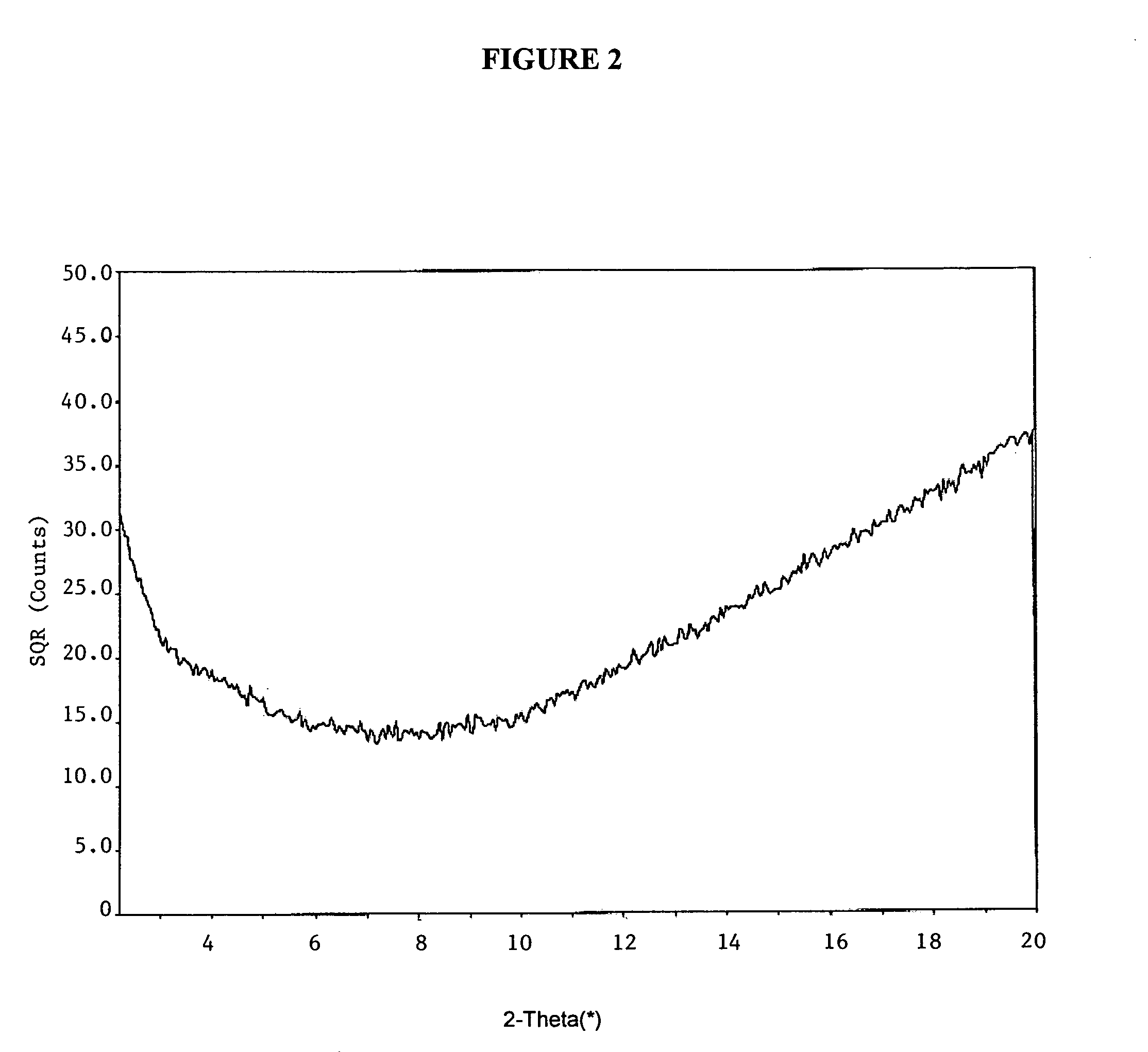Polyfunctional dispersants for controlling viscosity of phyllosilicates
a phyllosilicate and polyfunctional technology, applied in the field of rheology control agents, can solve the problems of phyllosilicate flocculation, phyllosilicate flocculation, time-and-shear-dependent rheology, thixotropy, etc., and achieve the effects of reducing the viscosity of the phyllosilicate slurry, reducing the viscosity, and managing the viscosity
- Summary
- Abstract
- Description
- Claims
- Application Information
AI Technical Summary
Benefits of technology
Problems solved by technology
Method used
Image
Examples
example 1
[0046]This example shows that bifunctional dispersants are not influenced by the presence of +2 or +3 cations. A hectorite ore containing impurities of calcite and dolomite was dispersed in deionized water at a solids concentration of 10 weight percent at pH 9 with 3 weight percent (relative to the weight of phyllosilicate ore) sodium salt of HEDPA. The ore was beneficiated using the pseudophasic extraction process by sequential addition of polyethylene glycol and polypropylene glycol followed by centrifugation. The viscosity of the slurry was between 1 and 10 mPa s. The concentration of hydrophilic phyllosilicate in the product was 10.7 weight percent. Addition of either calcium acetate or aluminum nitrate at concentrations equal to 50 mole percent of the phosphonate content had no effect on the viscosity of the slurry.
example 2
[0047]This example shows the effect of bridging ions on the viscosity of phyllosilicate slurries dispersed with a polyfunctional dispersant. The hectorite ore of Example 1 was dispersed in deionized water at a solids concentration of 10 weight percent at pH 9 with 3 weight percent (relative to the weight of phyllosilicate ore) sodium salt of phytic acid. The ore was beneficiated using the pseudophasic extraction process by sequential addition of polyethylene glycol and polypropylene glycol followed by centrifugation. The viscosity of the slurry was between 1 and 10 mPa s. The concentration of hydrophilic phyllosilicate in the product was 10.5 weight percent. Addition of either calcium acetate or aluminum nitrate at concentrations equal to 50 mole percent of the phosphonate content caused immediate gelation producing a viscosity in excess of 10,000 mPa s.
example 3
[0048]This example shows the effect of bridging ions on the viscosity of phyllosilicate slurries dispersed with a polyfunctional dispersant. A saponite ore containing calcite and dolomite as the major impurities was dispersed in deionized water at a solids concentration of 15 weight percent at pH 7 and with 3 weight percent (relative to the weight of phyllosilicate ore) sodium salt of phytic acid. The viscosity of the resulting slurry was in excess of 1,000 mPa s. Calcium and magnesium ions being supplied by partial dissolution of the calcite and dolomite at pH 7 were sufficient to cause gelation.
PUM
| Property | Measurement | Unit |
|---|---|---|
| Fraction | aaaaa | aaaaa |
| Percent by mass | aaaaa | aaaaa |
| Fraction | aaaaa | aaaaa |
Abstract
Description
Claims
Application Information
 Login to View More
Login to View More - R&D
- Intellectual Property
- Life Sciences
- Materials
- Tech Scout
- Unparalleled Data Quality
- Higher Quality Content
- 60% Fewer Hallucinations
Browse by: Latest US Patents, China's latest patents, Technical Efficacy Thesaurus, Application Domain, Technology Topic, Popular Technical Reports.
© 2025 PatSnap. All rights reserved.Legal|Privacy policy|Modern Slavery Act Transparency Statement|Sitemap|About US| Contact US: help@patsnap.com



